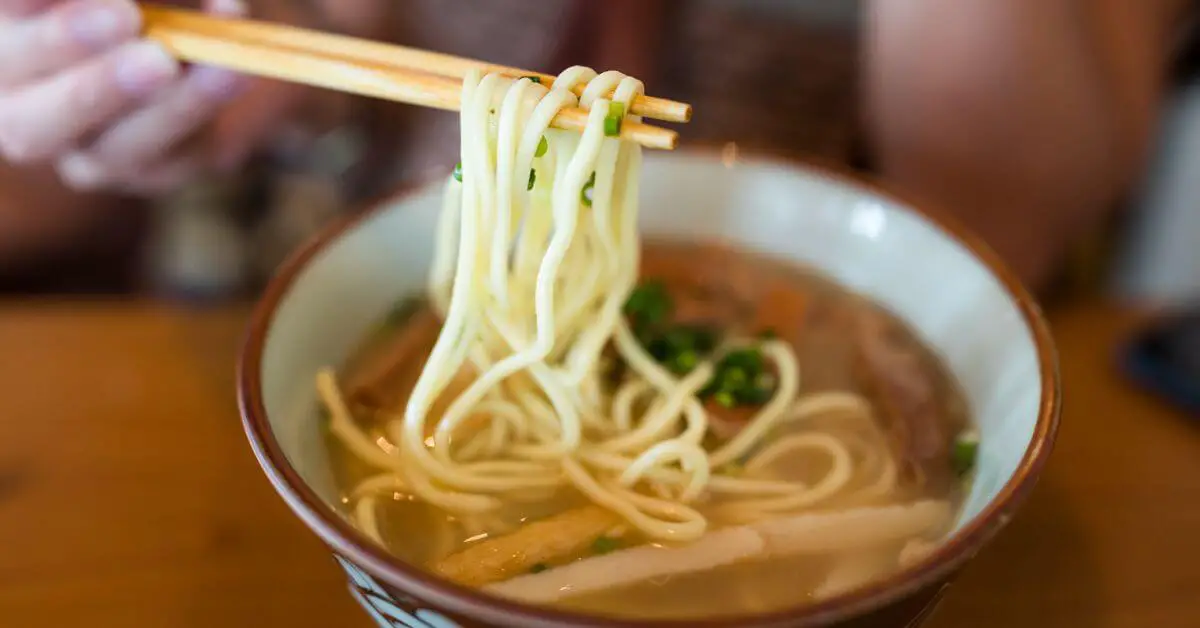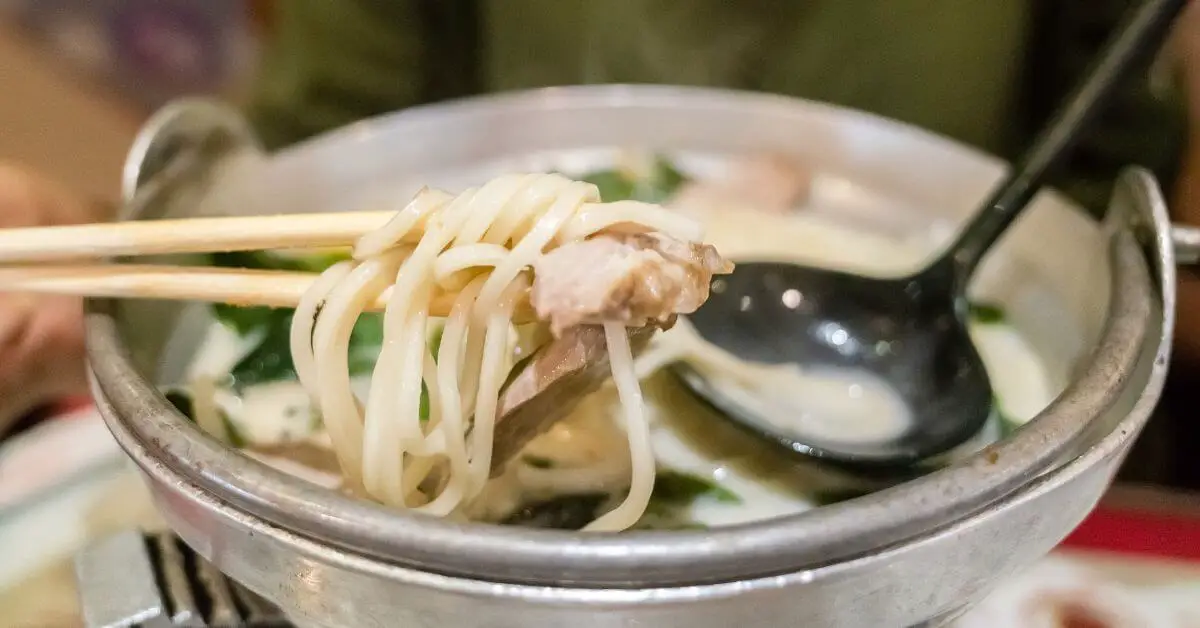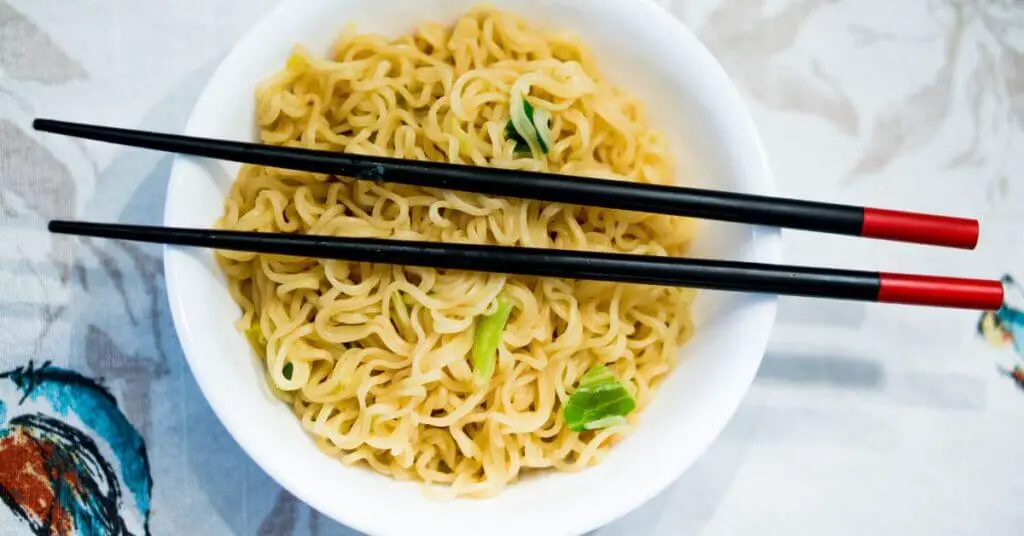Ramen, a culinary delight that has captivated food enthusiasts worldwide, is not just a dish but an experience. Learning how to eat ramen properly is essential to truly appreciate its complexity and flavors. Originating from Japan, understanding how to eat ramen involves more than just savoring its taste; it’s about immersing oneself in a rich cultural tradition. This guide on how to eat ramen will take you through the journey of ramen’s evolution, from a simple noodle soup to a global phenomenon. As we delve into how to eat ramen, we’ll explore its various styles, ingredients, and the etiquette surrounding this beloved dish. Whether you’re a seasoned ramen lover or new to this culinary world, mastering how to eat ramen will enhance your appreciation and enjoyment of every bowl. Join us as we embark on this delicious exploration of how to eat ramen.
Types of Ramen
Ramen comes in various styles, each with its distinct flavor profile and ingredients. The most renowned types include:
- Shoyu Ramen: Soy sauce-based broth, typically featuring a clear, brown soup.
- Miso Ramen: Rich and hearty, made with miso paste.
- Tonkotsu Ramen: Known for its thick, pork bone-based broth.
- Shio Ramen: A lighter option with a salt-based broth.
Each type offers a unique experience, from the savory depth of Tonkotsu to the light and refreshing Shio. Regional variations further add to this diversity. For instance, Hokkaido is famous for its miso ramen, often enriched with butter and corn, while Kyushu is known for its rich Tonkotsu. These variations not only showcase the versatility of ramen but also reflect the local culture and ingredients. To explore the wide range of ramen styles, visit Japanese Cuisine and discover how each region in Japan has contributed to this culinary art.
Ingredients in Ramen
The soul of any ramen dish lies in its three key components: broth, noodles, and toppings.
- Broth: The foundation of ramen, it can range from light chicken or fish-based to rich and creamy pork bone broths. The flavor is often enhanced with soy sauce, miso, or salt.
- Noodles: Typically wheat-based, these vary in thickness and texture. Some prefer them thin and firm, while others enjoy thicker, chewier noodles.
- Toppings: Common toppings include sliced pork (chashu), boiled eggs (ajitama), bamboo shoots (menma), and green onions. Seaweed and mushrooms are also popular.
Each ingredient plays a crucial role in creating the perfect bowl of ramen. The broth provides the base flavor, the noodles add texture, and the toppings bring additional layers of taste and texture. For inspiration on customizing your ramen, check out various ramen toppings ideas and experiment with different combinations to create your signature bowl.
Preparing Ramen: A Step-by-Step Guide

Creating a delicious bowl of ramen involves several key steps:
-
Selecting the Right Ingredients:
- Broth Ingredients: Choose a base like chicken, pork, or fish bones. Freshness is key for a rich flavor.
- Noodles: Opt for high-quality wheat noodles, considering thickness and texture based on your preference.
- Toppings: Prepare toppings like chashu (sliced pork), ajitama (soft-boiled egg), bamboo shoots, and green onions. Freshness and quality are crucial for the best taste and texture.
Selecting the right ingredients is the first step to an exceptional ramen experience. Each element, from the broth to the toppings, plays a crucial role in the overall flavor of the dish. For a variety of broth recipes and ideas, explore ramen broth recipes to find the perfect base for your ramen.
-
Cooking Techniques for Broth and Noodles:
- Broth: Begin by simmering your chosen bones for several hours. This slow cooking process extracts flavors and creates a rich base. Season with soy sauce, miso, or salt to taste.
- Noodles: Cook the noodles in boiling water until they reach your desired level of firmness. Be mindful not to overcook, as they will continue to soften in the hot broth.
The broth should be flavorful and aromatic, serving as the soul of your ramen. The noodles, on the other hand, should complement the broth in texture and firmness. For more on mastering these techniques, visit Cooking Techniques and enhance your culinary skills.
-
Assembling the Perfect Bowl:
- Place the cooked noodles in a bowl.
- Pour the hot broth over the noodles.
- Add your chosen toppings, arranging them aesthetically.
Assembling your ramen is the final step in this culinary journey. The way you layer the noodles, broth, and toppings can greatly impact the eating experience. Each component should be in harmony, creating a balance of flavors and textures in every bite. For additional assembly tips and ideas, check out ramen cooking tips and craft your perfect bowl of ramen.
Customizing Your Ramen
Personalizing your ramen bowl is a creative and enjoyable process. Here are some ideas to customize your ramen:
- Experiment with Broth: Try different bases like chicken, pork, or vegetarian options. Adjust the seasoning with soy sauce, miso, or spices.
- Choose Your Noodles: Select from various noodle types and textures. Some prefer thin and firm, while others like them thick and chewy.
- Play with Toppings: Beyond the classic chashu and ajitama, consider adding corn, butter, or spicy chili oil for an extra kick.
The beauty of ramen lies in its versatility. Whether you’re in the mood for a hearty, meaty bowl or a light, veggie-packed dish, there’s a ramen style for you. For additional ideas on enhancing your ramen, explore ramen cooking tips and unleash your culinary creativity. For those looking to add a healthy, lean protein to their ramen, explore versatile ways to incorporate chicken with these thin chicken breast recipes, perfect for every diet.
Ramen Etiquette
Eating ramen is not just about taste but also about respecting the traditions and etiquette that come with it. Here are some key points to remember:
- Slurping is Encouraged: In Japan, slurping your noodles is considered a sign of enjoyment and helps cool them down. Learn the art of slurping noodles to fully embrace this aspect of ramen culture.
- Eat Quickly: Ramen is best enjoyed when it’s hot, and eating quickly prevents the noodles from becoming too soft.
- Use Chopsticks and Spoon: Use chopsticks to pick up noodles and a spoon for the broth. It’s acceptable to lift the bowl to your mouth to drink the broth directly.
Understanding and practicing these etiquettes enhances the ramen eating experience and shows respect for its cultural significance. For more on Japanese dining customs, visit Japanese Dining Etiquette and immerse yourself in the cultural aspects of enjoying ramen.
The Right Way to Eat Ramen

Eating ramen is an art that involves more than just tasting; it’s about appreciating and balancing the harmony of flavors and textures. Here are the techniques to enhance your ramen eating experience:
-
Techniques for Eating Noodles and Broth:
- Noodles: Use chopsticks to gently lift a manageable portion of noodles. Allow them to dangle briefly to cool just a bit, then slurp them in. Slurping is not only culturally appropriate but also aerates the noodles, enhancing their flavor.
- Broth: Savor the broth between bites of noodles. Use the spoon provided, and feel free to sip directly from the bowl. Tasting the broth first gives you a sense of the overall flavor profile of the dish.
The interplay between the noodles and broth is central to the ramen experience. Each element should complement the other, with the noodles offering texture and the broth providing depth and warmth. For more insights into noodle dishes and their unique characteristics, explore the noodle soup varieties.
-
Balancing Flavors and Ingredients:
- Combining Elements: Try to get a bit of everything in each bite – a piece of topping, some noodles, and a sip of broth. This combination allows you to experience the full range of flavors and textures in the bowl.
- Adjusting to Taste: Feel free to add condiments like chili oil or vinegar to tweak the flavor to your liking. However, taste the ramen as it is first to appreciate the chef’s intended flavor profile.
Balancing the flavors and ingredients in your ramen bowl is key to enjoying this beloved dish. Each component, from the savory broth to the springy noodles and the rich toppings, plays a role in creating a harmonious and satisfying meal. Remember, the right way to eat ramen is to enjoy it fully, respecting its tradition while savoring every bite.
Slurping: More Than Just Eating
Slurping while eating ramen is a practice steeped in significance and is much more than a mere eating technique. It’s a respectful acknowledgment of the dish’s flavors and the chef’s skill.
-
Significance of Slurping in Ramen Culture:
- In Japan, slurping is not just acceptable; it’s considered a compliment to the chef. It signifies that you are enjoying the meal and fully engaging with the dish.
- Slurping enhances the taste experience. It cools the noodles and broth slightly, making them more palatable, and helps to mix the aromatic components, intensifying the flavors.
Understanding and participating in this aspect of ramen culture enriches the dining experience. It connects you to the traditions and customs that have shaped the way ramen is enjoyed in its homeland. To learn more about the cultural practices surrounding ramen, including slurping, visit Japanese Dining Etiquette.
-
How to Slurp Properly:
- Use your chopsticks to lift a small bundle of noodles from the bowl.
- Lean over your bowl and bring your mouth close to the noodles.
- As you take the noodles into your mouth, inhale gently to draw in both noodles and air. This action cools the noodles and enhances their flavor.
Slurping might feel unusual at first, especially if you’re not accustomed to it, but with practice, it becomes a natural part of enjoying ramen. For tips and demonstrations on the art of slurping, explore resources like slurping noodles, where you can find visual guides and tutorials. Embracing this practice will not only improve your ramen eating experience but also show respect for its rich cultural heritage.
Pairing Drinks with Ramen
Choosing the right beverage to accompany your ramen can significantly enhance the dining experience. Here are some non-alcoholic pairings that complement the rich flavors of ramen:
- Green Tea: A classic choice in Japanese cuisine, green tea offers a subtle bitterness that balances the savory depth of ramen. Its lightness contrasts well with heavier broths, cleansing the palate between bites.
- Barley Tea (Mugicha): Popular in Japan, barley tea has a toasty flavor and a slight nuttiness, making it a refreshing counterpart to the umami-rich ramen.
- Sparkling Water: For those who prefer a neutral drink, sparkling water is an excellent choice. Its effervescence helps cut through the richness of the broth, refreshing your palate.
- Fruit Juices: Opt for a tart fruit juice like apple or cranberry to add a sweet and sour element. This contrast can elevate the flavors in your ramen, especially in spicier varieties.
- Soft Drinks: A cold soft drink can be a pleasant addition, especially with spicier ramen types. The carbonation and sweetness offer a break from the heat and intensity of the dish.
Each of these drinks brings a unique element to the ramen dining experience, complementing the dish without overpowering it. Whether you prefer the subtle bitterness of tea or the crispness of sparkling water, there’s a non-alcoholic pairing that will suit your ramen perfectly.
Advanced Ramen Tips
For those looking to elevate their ramen game, here are some advanced tips:
- Adjust the Broth: Customize the broth’s intensity by adding extra condiments like chili oil or vinegar.
- Experiment with Toppings: Try unconventional toppings like cheese or roasted vegetables for a unique twist.
- Noodle Texture: If you prefer firmer noodles, ask the chef to cook them kata (al dente).
These tips can help transform a standard bowl of ramen into a personalized culinary masterpiece. For more advanced cooking techniques and ideas, delve into ramen cooking tips and take your ramen to the next level. Curious about celebrity takes on ramen? Learn how to make the viral Kylie Jenner Ramen with this simple guide.
FAQs
-
How do I start eating my ramen?
- Begin by tasting the broth to appreciate its flavor. Then, use chopsticks to pick up a small amount of noodles, lifting them from the bowl. It’s recommended to grab less than you think you need to avoid dropping them.
-
Is it okay to slurp when eating ramen?
- Yes, slurping is not only acceptable but also encouraged in ramen culture. It helps cool down the noodles and enhances the flavor by mixing them with the broth.
-
What’s the proper way to use chopsticks and a spoon with ramen?
- Hold your chopsticks in your dominant hand and the ramen ladle or spoon in the other. Use the chopsticks to pick up noodles and the spoon to scoop up broth or assist with the noodles.
-
Can I mix the ingredients in my ramen bowl?
- Absolutely. Feel free to mix the soup with the noodles and toppings as you please. This helps to evenly distribute flavors and textures throughout the dish.
-
What should I do if I can’t finish my ramen?
- If you can’t finish your ramen, it’s acceptable to leave some broth in the bowl. However, try to finish most of the noodles and toppings, as they are the main components of the dish. Conclusion: The Ramen Journey
Looking for side dishes to complement your ramen? Explore ideas on what to serve with chicken thighs for a complete meal experience.
Conclusion
Ramen is more than just a dish; it’s a journey through flavors, traditions, and culinary art. From selecting the perfect ingredients to mastering the etiquette of eating, each step in the ramen experience is a testament to its cultural and gastronomic significance. Whether you’re a seasoned ramen enthusiast or a curious newcomer, there’s always something new to discover in the world of ramen. Embrace the diversity, experiment with flavors, and most importantly, enjoy the journey. For a final touch of inspiration, explore the history of ramen and embark on your own ramen adventure.
